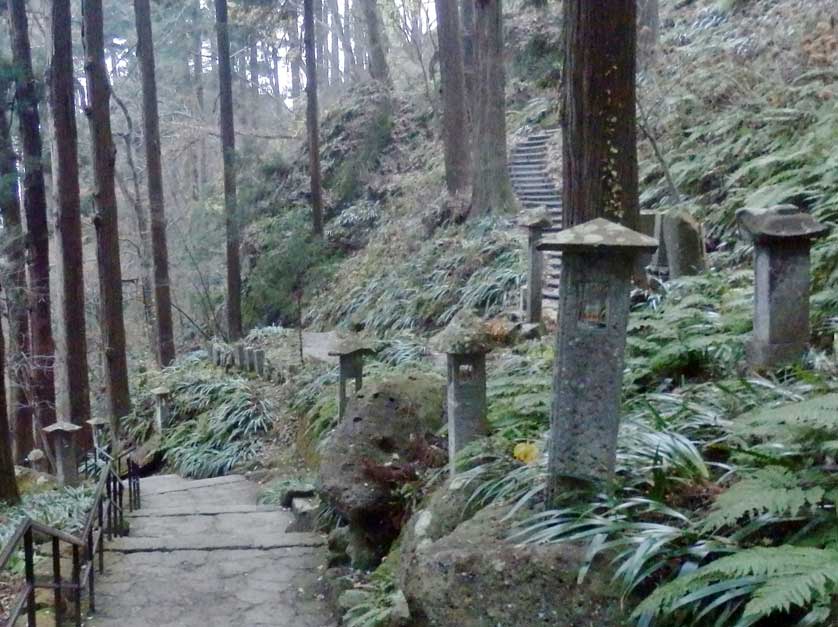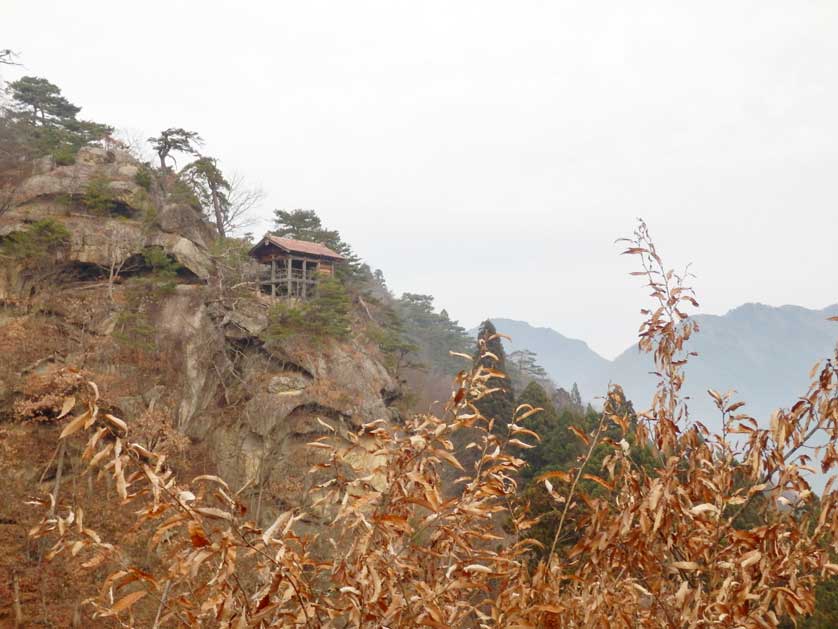Yamadera, a mystical mountain temple in the heart of Japan's Tohoku region
- Published on : 19/04/2024
- by : Japan Experience
- Youtube

Located in the mountains northeast of Yamagata City, Yamadera is a scenic Buddhist temple complex founded over a thousand years ago in 860. Its official name is Risshakuji, but it is popularly known as Yamadera, meaning "mountain temple" in Japanese. Yamadera offers visitors a unique spiritual experience, breathtaking views, and an encounter with Japan's rich history and culture.
History and spiritual significance of Yamadera
Yamadera was founded in 860 AD by the Buddhist monk Jikaku Daishi (Ennin), who brought the ritual flame from Enryaku-ji temple on Mt. Hiei near Kyoto. This flame has been burning continuously in the Konpon Chudo main hall for over 1,200 years. In the 13th century, Yamadera was converted to Zen Buddhism before being returned to the Tendai sect in 1356.
Over the centuries, Yamadera developed into a major center for Buddhism in the Tohoku region. The mountain itself was considered a sacred site for ascetic training. Even today, it is believed that worshipping at Yamadera can help end bad relationships and bring good fortune. The temple was patronized by shoguns and daimyo during the medieval period.
Hiking the 1000 steps through an enchanting cedar forest
To reach the upper precincts of Yamadera, visitors must climb a steep stone stairway of over 1000 steps. The trail winds through a mystical cedar forest, passing by dozens of halls, pagodas, and stone lanterns. Scattered along the route are many nio statues, ancient graves, and memorials.
With each step ascended, it is said that one worldly desire is left behind, making the climb a form of spiritual purification. Rest stops offer chances to catch your breath while admiring the lush natural surroundings. Prayer tablets and coins are often left at small shrines beside the path. The hike up and down typically takes 1-2 hours.

Stairs through the cedar forest, Yamadera Temple, Yamagata Prefecture
Key temple buildings and their unique features
At the base of the mountain is the Konpon Chudo, the main hall of Yamadera and a designated National Treasure. This ancient wooden building housing sacred statues is considered the oldest beech wood structure in Japan. Other notable buildings include the Nokyodo sutra repository perched on a rocky outcrop, the Kaisando founder's hall, and the Godaido observation deck.
As you ascend through the Niomon gate with its fierce guardian deities, a whole mountain village of subtemples and halls are revealed. Some of these continue to serve as sites for esoteric Buddhist training by monks. At the very top are Okunoin temple and the Daibutsuden hall with its golden Amida Buddha statue.
Godaido Hall and the unforgettable panoramic views
The highlight of a visit to Yamadera is the view from Godaido Hall, a national cultural property that juts out over the mountainside on wooden stilts. From this observation deck, the stunning panorama of the valley and distant mountains opens up before you. The scenery transforms with the seasons, from spring cherry blossoms to brilliant autumn foliage to winter snow.
Reaching Godaido and taking in the breathtaking vista makes the effort of the climb worth it. On a clear day, you can see for miles, with the towns and rice paddies laid out below and rolling forested mountains fading into the horizon. Gazing out from this lofty perch truly feels like a mystical experience that cleanses the soul.

Konpon Chudo, the Main Hall of Yamadera Temple, Yamagata Prefecture
Yamadera's connection to the renowned haiku poet Basho
Yamadera is famous for its association with Matsuo Basho, one of Japan's greatest haiku poets. Basho visited Yamadera in 1689 during his epic journey depicted in "The Narrow Road to the Deep North." Inspired by the profound silence and natural beauty of the temple, he composed one of his most iconic poems: "Silence - the cicada's cry penetrates the rocks."
At Yamadera, you can see a statue of Basho, a stone monument engraved with his poem, and the Semizuka mound where local poets later buried some of his writings. Across the valley from the temple is the Yamadera Basho Memorial Museum with exhibits on the poet's life and work. Walking in Basho's footsteps from the Edo Period is a major draw.
Practical information for visiting Yamadera
Yamadera Station on the JR Senzan Line is just a 5-minute walk from the temple entrance. Trains run hourly from Sendai (1 hour) or Yamagata (20 mins). The Shinkansen from Tokyo connects to Sendai. Admission is ¥300 for adults. The temple is open from 8:00 to 17:00 (until 16:30 in winter). Some buildings have additional entry fees.
Sturdy walking shoes and weather-appropriate clothes are recommended for climbing the trail. Bringing water is essential. In the hot summer months, watch out for venomous mamushi snakes sometimes seen on the path. After your hike, stop in the shops by the entrance to try local specialties like chikara konnyaku, soba noodles, and cherry-flavored soft serve. More info at www.yamaderakankou.com.
Seasonal highlights and photographic opportunities at Yamadera
Each season reveals a different face of Yamadera's beauty. In spring, the mountain blooms with cherry blossoms and other flowers. Summer brings lush greenery and the echoing song of cicadas. Fall sees the landscape burst into vivid shades of red, yellow and orange from the changing leaves. And winter transforms Yamadera into a silent wonderland of snow and frost.
For photographers, Yamadera offers endless opportunities. Capture the morning mist drifting through the valley, rays of light filtering through towering cedars, or the dramatic play of shadows on the temple's weathered wood. Zoom in on details like moss-covered statues, clusters of crimson maple leaves, or ice crystals decorating the eaves. The view from Godaido is spectacular in any season, especially at sunrise or sunset.
Whether you come for the history, the spiritual ambiance, the scenic hiking, or the chance to walk in Basho's footsteps, Yamadera will leave a profound impression. This sacred mountain temple complex showcases the harmony between Japan's Buddhist traditions and its natural landscape, inviting you to pause and reflect on the deeper meanings of life. Discover one of Yamagata Prefecture's most magnificent destinations with a visit to Yamadera.
For more ideas on temples and shrines to visit in Japan, check out our other travel guides and books.

Autumn view from the Godaido, Yamadera Temple, Yamagata Prefecture










